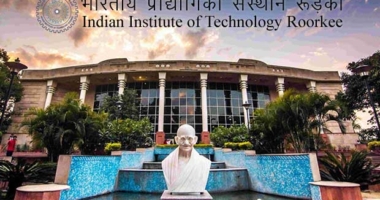Governments can improve public service delivery and lives by leveraging contemporary technology and massive amounts of data available to them, according to Scott Jensen, the CEO of RIPL. He suggests that modernizing the procurement process, focusing on resident-first approaches, and working closely with developers can help governments improve public outcomes. He cites examples from Hawaii and Maryland, where machine learning and AI are used to analyze unemployed workers’ resumes and suggest training opportunities and higher-wage careers. Jensen emphasizes the need to focus on applications of technology that complement process reforms and to approach technology differently. While technology is necessary, its success is limited by the underlying bureaucracy, and off-the-shelf tech solutions don’t exist for hard problems. By leveraging data, science, and technology, governments can improve policy and lives.
The Role of Government in Unlocking AI’s True Potential
To unlock AI’s potential, governments need to learn to walk with technology before running. The key building blocks to unleash AI’s power are data, which is possessed by governments. AI has conquered human-exclusive realms such as visual arts and language, but its promise to solve our biggest challenges is not imminent. AI alone cannot improve our lives, and governments must play a crucial role in harnessing its power.
ChatGPT is an advanced chatbot capable of writing mystery novels, writing code, and passing MBA exams. It is a significant accomplishment for the chatbot to perform such tasks.
Unlocking AI’s Potential in Government: Learning to Walk Before Running
The potential of artificial intelligence (AI) remains untapped due to the government’s difficulty in effectively utilizing the technology. Governments possess the necessary building blocks to unleash AI’s potential, namely data, but they must first learn to walk with technology before they can run.
As someone who has led two state labor departments, one during the COVID-19 pandemic, I have seen firsthand how critical services such as public workforce and unemployment programs remain rooted in outdated practices and powered by yesterday’s technology. While technology can be helpful, it is not a standalone solution.
To successfully leverage technology, government must shift its mindset and recognize that technological solutions must be deeply integrated with processes. Without corresponding changes in operations, technological solutions are doomed to fail.
The unemployment insurance system is a case study in how technological solutions must couple with operational changes. During the pandemic, millions of workers were suddenly without jobs and applying for unemployment insurance in record numbers. Despite the investment of millions of dollars in “modernized” systems, no state unemployment insurance program performed well.
In conclusion, unlocking AI’s potential in government requires a shift in mindset that acknowledges the importance of coupling technological solutions with changes in operations. Governments must learn to walk with technology before running to realize AI’s full potential.
During the COVID-19 pandemic, the author, who led two state labor departments, observed firsthand how many critical services such as public workforce and unemployment programs still rely on outdated technologies like refrigerator-sized mainframes from the 1980s. However, the pandemic also showed that technology can help. Governments possess the necessary data to unleash the full potential of artificial intelligence (AI), but they must first learn how to integrate technology into their operations. Governments need to shift their mindset and understand that technological solutions must be coupled with changes in processes in order to succeed. The pandemic highlighted this issue with state unemployment insurance systems, as even those with “modernized” systems that had cost millions of dollars failed to process claims quickly. However, the author’s team was the first to accept Pandemic Unemployment Assistance claims and the second fastest to pay them, despite using an obscure programming language that few people know.
Leveraging Technology for Better Process and Service Delivery
The key to successful implementation of technology is to complement it with process reforms. This applies to both the public and private sector, where iterative, resident-first approaches are becoming the norm. This means that developers work closely with residents and state partners to understand problems, test solutions and refine them continuously.
The government’s traditional approach to administering unemployment insurance is not scalable. Staff manually reviews each claim, while also handling call center operations and answering questions, leading to a slow and tedious process. To streamline the process and free up staff, they have made every possible operational fix during the pandemic, with a motto of “let tech handle easy cases so people can help people.”
However, contemporary technology alone is not enough. The latest technology in the world is only as good as its underlying bureaucracy. One of the challenges to government innovation is the procurement process, which is primed to buy easy off-the-shelf tech solutions. Unfortunately, these solutions do not do the hard work of actually improving service delivery, which is why technology rarely drives public outcomes.
Successful projects in both the public and private sector use an iterative, resident-first approach, which becomes easier with contemporary technology. This approach also frees the data that fuels a virtuous cycle of continuous improvement that transforms service. For instance, states have decades of quarterly wage records. By using machine learning and AI to mine this trove of data, we can transform workforce training programs, leading to higher wages.
In Maryland and Hawaii, machine learning is working on tens-of-millions of state wage records to analyze an unemployed worker’s resume and provide data-backed recommendations for training opportunities, job openings, and new careers. These careers have been proven to lead to higher wages based on which careers similar job seekers have switched to, stuck with and earned more in.
In conclusion, leveraging technology for better process and service delivery requires a complementary approach with process reforms. The iterative, resident-first approach becomes easier with contemporary technology, which frees the data that fuels a virtuous cycle of continuous improvement that transforms service. By using machine learning and AI to mine decades of data, we can transform workforce training programs, providing better opportunities for job seekers.
With access to massive amounts of data, machine learning can be used to improve lives in countless ways. Governments hold a wealth of data that can be leveraged to transform service delivery, but this requires a different approach to technology. Scott Jensen, CEO of RIPL, a nonprofit organization that collaborates with governments to use data and technology to improve policy and lives, emphasizes the importance of using technology to complement process reforms. By adopting an iterative, resident-first approach and working closely with state partners, developers can understand problems, test solutions, and refine them to drive better outcomes.
Don’t miss interesting posts on Famousbio








